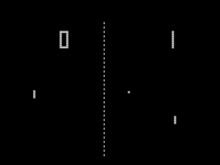
We often say someone is “creative”, but what is creativity good for? It’s not just for solving problems, although it takes a lot of creativity and expertise to figure out the thorniest issues. Creativity is a way we express ourselves and stand out; there are lots of experts but the best have both the creativity and the expertise to get a job done. While I believe most animals evolved to have some creativity, humans take this trait to the max (as we do with most things). Consider the Lion Man — a 40,000 year old statue of a humanized lion carved from ivory. Read the origin date again — it was created forty thousand years ago my cave men! It’s about a foot tall, has the head of a lion and body of human. It’s one of the earliest examples of human creativity we know about, in addition to all of the cave paintings that date to approximately the same time. But unlike cave painting which tend to depict scenes of real life, this statue is something else. It’s a fictional creature. Nothing like that ever existed in nature, it’s a figment of someone’s imagination. The statue, which was found…





